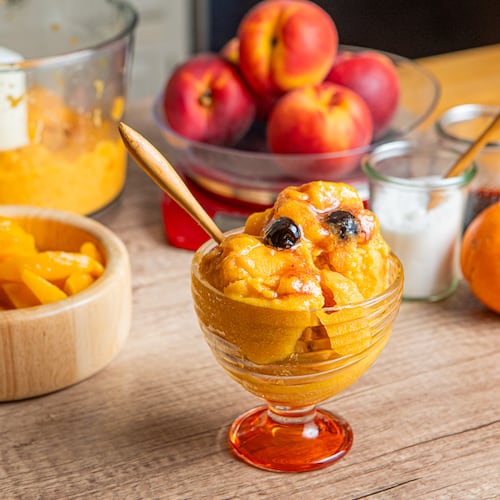When I sold my sailboat I met the buyers at an Italian restaurant to hand over the documents and accept the all-important envelope of cash. That’s not a euphemism — they really did slide a white envelope across the table at me. It was stuffed so full of greenbacks it looked like a fluffy down pillow.
Gosh, I miss that envelope. But that’s not the point! The point is, they both ordered fried chicken.
Question No. 1: Why would anyone order fried chicken in an Italian restaurant? Question No. 2: Why would an Italian restaurant offer fried chicken on its menu? At the time, I could not imagine a logical answer to either question, but I will tell you this: When those crusty yard birds arrived, each with a lovely side of potatoes, they looked pretty decent.
Rather than bolting with my pillow of cash, I waited until the new owners of my boat bit into their identical dinners so I could ask them how the chicken was. They both gave it the thumbs-up, and I walked out of that restaurant a little perplexed. Maybe they weren’t so great at tasting. Maybe the chicken actually was good. But how could it be?
I was younger then. I now realize that fried chicken can be good in an Italian restaurant because chicken is food and an Italian restaurant is … a place where culinary professionals prepare and serve food. “Stay open to possibilities,” I’ve told myself since then. “Allow yourself to be surprised.” This attitude is useful when considering the dry red wines of the Douro region in northern Portugal.
Yes, this is where they grow the grapes that make legendary, fortified, sweet port wines. And no, the wines we are talking about here are not the least bit sweet. And yes, port and non-port winemakers use a lot of the same grape varieties to make their wines, but the resulting wine styles are about as similar as a brother and sister can be. At a certain point the similarities end and the distinctions emerge most clearly. To return to the chicken incident, the bottom line is: What’s good is good, no matter where it comes from, or where we least expect to find it.
The Douro is best known for its steep terraced hills rising up from the banks of its namesake river (which is called the Duero in nearby Spain), and its hot summers. Most of the nondessert wines from the region are red and big and powerful. A lot of them are blends. They range from quite expensive to not so expensive to bona fide bargain-ish. We’ll focus on the latter two categories here. There are dozens of grape varieties allowed in the Douro, including touriga nacional (the superstar of Portuguese wines), touriga franca, tinta roriz (known as tempranillo in its native Spain) and tinta barroca. These four varieties make up the bulk of the wines I tasted recently.
Look for large capital letters spelling PASSA on the label of the 2012 Quinta do Passadouro Passa Tinto ($15), which offers cherry, raspberry, cedar, a little smoke and a silky mouthfeel. Try it with pork or mushroom risotto, or just drink it on its own.
The 2011 Casa Burmester Reserva ($25) is 40 percent touriga nacional, 40 percent touriga franca and 20 percent tinta roriz. Having spent considerable time in new French and American oak barrels, it delivers spicy red fruits and an oaky punch. Using the same three grape varieties but changing the percentages significantly gives the 2013 Jose Maria da Fonseca Domini ($16) the formidable essence of cedar, tobacco, plum and incense — an impressive wine for the price. Drink both of these wines with grilled red meats.
There is a lot happening in a glass of 2012 Quinta da Manoella Tinto ($22), which starts with violets and moves into red and blue fruit, black pepper and oak before sliding into a pleasant blueberry finish — another really good wine for the price. The easy-drinking 2013 Muxagat Vinhos Tinta Barroca ($20) is made of 100 percent tinta barroca that is fermented and aged in cement vats, offering cherry, incense, spice and a delightful lingering finish.
Six different grapes varieties go into the 2009 Vista da Regua Vinhas Velhas ($32), all of them from old vines, or “vinhas velhas” in the local language. Classic cigar box aromas lead to flavors of dark fruits and black pepper. With grippy tannins and 15.5 percent alcohol, this wine could age nicely for another few years, but is perfectly ready to drink now.
From the land of fortified dessert wines and red table wines, consider this last one a bonus, a reward for allowing yourself to be surprised. The 2012 Vertice Rose Vinho Espumante do Douro ($24) is a beautiful sparkling wine made of touriga franca and two white grapes (gouveio and malvasia fina) via the traditional method of secondary fermentation in the bottle. It offers brioche and anise with tiny, active bubbles that make it creamy yet crisp. It’s a pleasant aperitif, and a nice seafood accompaniment. But damn, come to think of it, you know what it would be perfect with? No joke — fried chicken.
About the Author
The Latest
Featured

